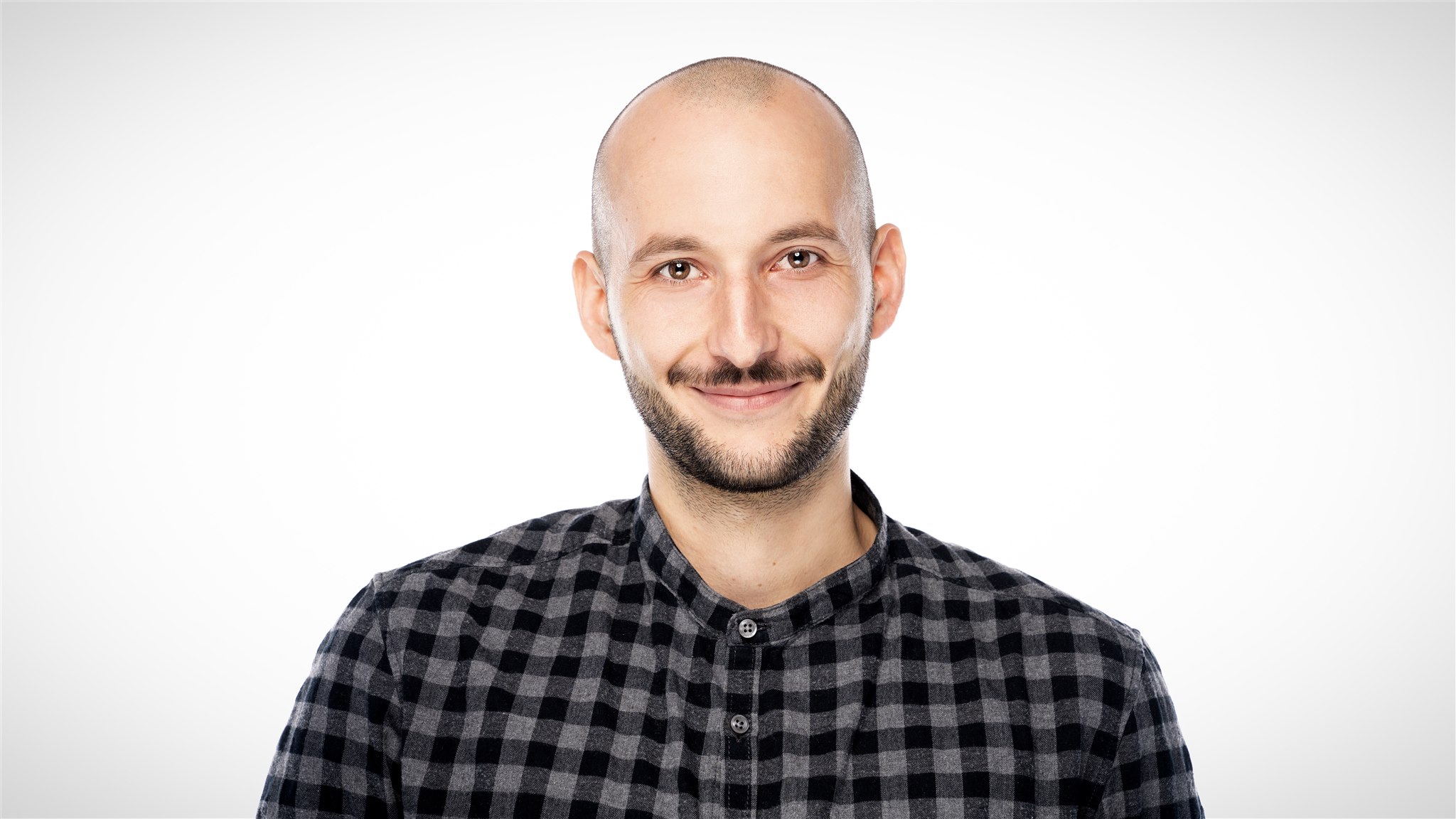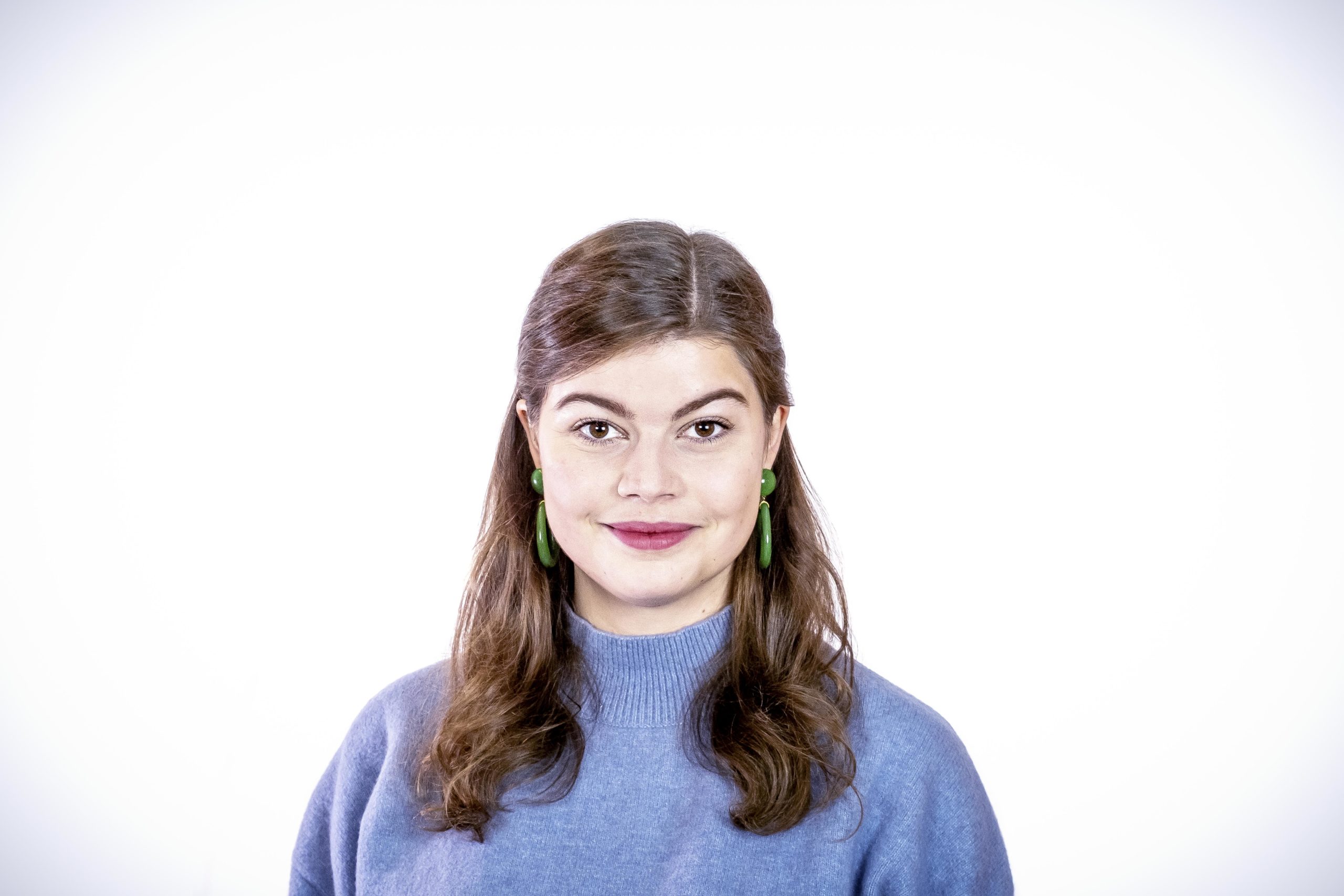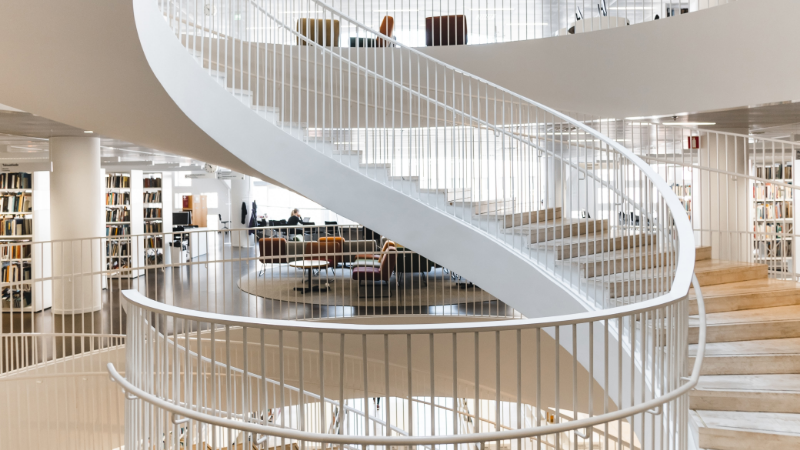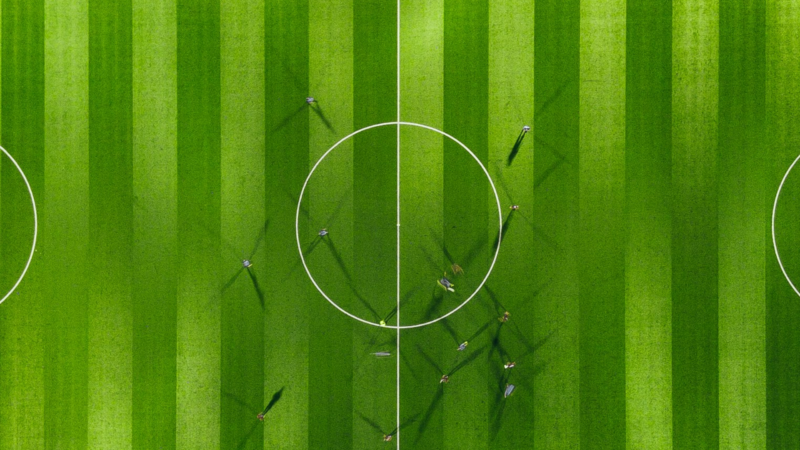Making sense of our connected world
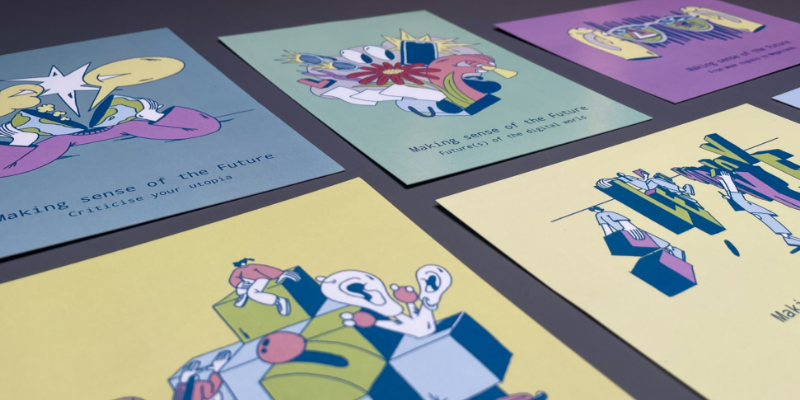
Making Sense of the Future: New brainteasers for digital futures in the classroom
How do students see our digital society in 20 years’ time? What is important to them and what might they overlook? What visions do they have for fair and sustainable digitalisation? Future literacy is a skill that needs to be learned and practised, just like reading and writing. The new learning toolkit entitled ‘Making Sense of the Future‘ helps teachers to teach in the classroom with brainteasers.
Digitalisation is everywhere: we use apps to help us in our daily lives, we order online and share our personal data on the internet. Nowadays, our communication is completely different due to social media such as Instagram or TikTok. Their influence also shapes our political opinions. What’s more, new technological innovations such as artificial intelligence are not only transforming the economy, but are also shaping the way we will live and work together in the future.
future is a verb, not a noun!
Using the methods of futures literacy, the pupils train their future skills in different exercises. Futures literacy here means in particular the ability to imagine diverse future scenarios and to use them as a lens to view their own present from completely new perspectives. In this way, pupils learn to organise the confusing digital world, rethink it in a motivated way and tackle the paradigm of uncertainty. We deliberately speak of futures in the plural, as numerous desirable futures are conceivable.
The exercises in the learning toolkit address the following questions, among others: How do we want to live together in a digital world? What impact will digitalisation have on me? What role do equality, sustainability or the common good play in the digital world? What do we need to change in our lives to avoid certain futures? What effective solutions, new ideas and social values do we need to shape a better future together?
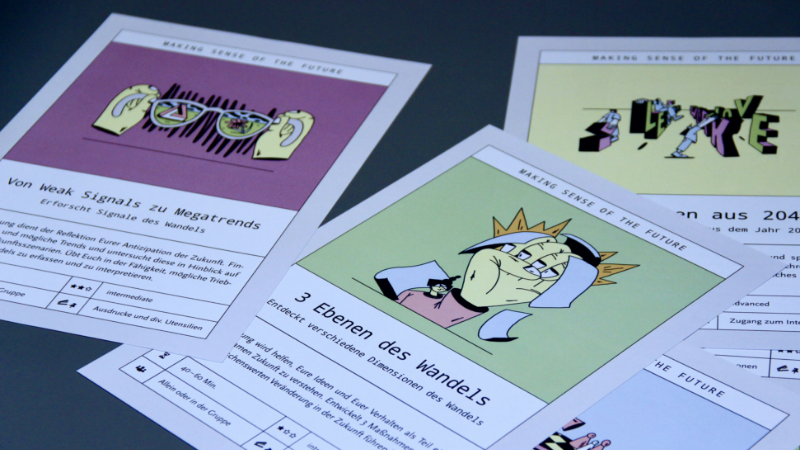
Active exchange in the classroom
The freely available online materials of the learning toolkit were developed by the Alexander von Humboldt Institute for Internet and Society in cooperation with the Federal Agency for Civic Education. After conducting a workshop with middle school students at an integrated secondary school in Berlin-Neukölln, the materials were revised and didactically adapted specifically for use in the classroom in collaboration with a teacher. Students can choose from six different exercises with different levels of difficulty, which include structured tasks with goal formulations, content-led group discussions and lively illustrations.
The central point is that it is not about knowledge transfer and reproduction by the students, but about independent, creative thinking. The German Abitur requirement areas II and III serve as a guideline here. Depending on the task, the exercises can be carried out alone or in groups with pen, paper and internet access. To help teachers, the printable exercise cards contain accessible key questions and examples that can be completed in 30 to 90 minutes, even without prior knowledge. You can modify and further develop the tasks depending on the subject, context and age in order to adapt them to your needs and motivation. It is conceivable that they could be linked to social science or computer science lessons – however, as no prior knowledge on the part of the teacher is required, they could also be used during classroom management sessions or on a project day.
Rethink instead of instead of rebuild
Overcrowded curricula hardly facilitate the integration of new methods and content and present a clear hurdle in the future-orientation of the learning material. It is often left to the personal commitment of the teacher to not only impart knowledge but also to train the learners’ future literacy skills, which they can then apply across all subjects. The toolkit is intended to make it easier for teachers from a wide range of subject areas to be prepared – be it in obvious subjects such as politics and economics or in maths, where statistics can help to understand the possibilities of artificial intelligence. There are also possible applications in history, for example, where the importance of democracy, data protection and equality can be placed in the context of digital coexistence. The exercises are therefore not only an exciting creative task for the classroom, but also a practical test for the important work on digitalisation in schools that is usually still lacking.
Example: Showing your own point of view
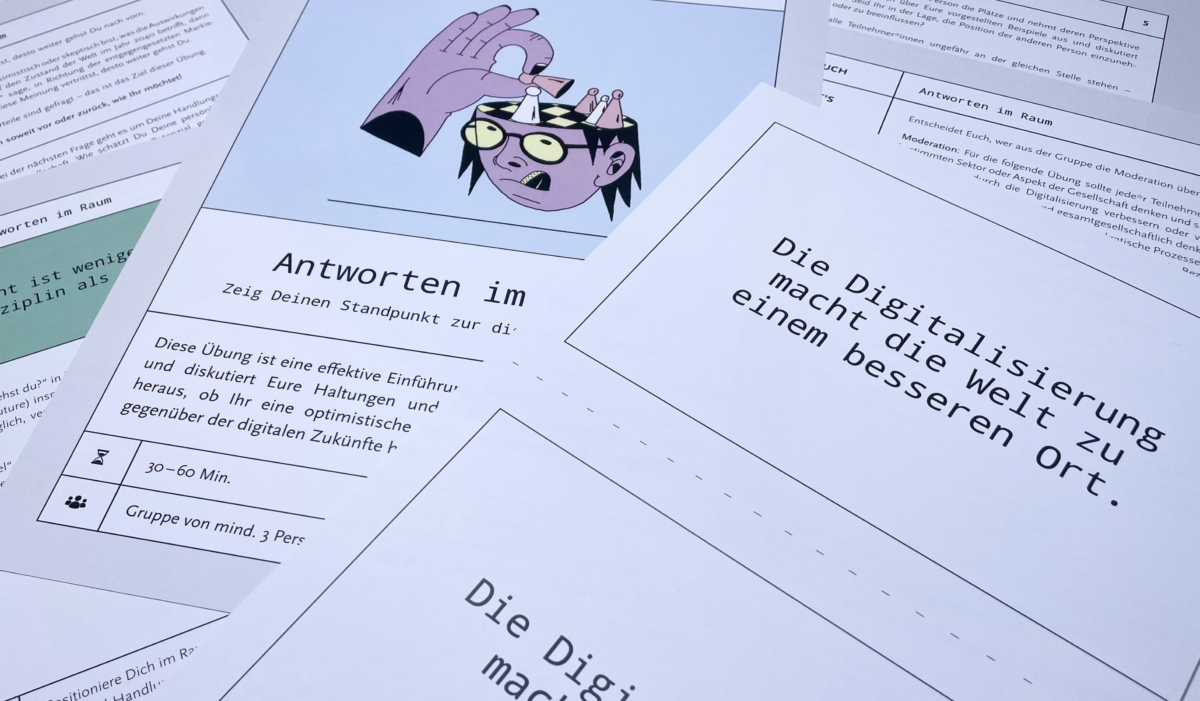
A suitable exercise for the classroom is called Answer by moving. The exercise specifically helps students to put themselves in the role of digital visionaries and develop their own point of view. Here, the students put themselves in the year 2040 and find out whether they have an optimistic or pessimistic attitude towards digital futures. A spatial set-up helps to gain an overview and at the same time helps to activate the pupils.
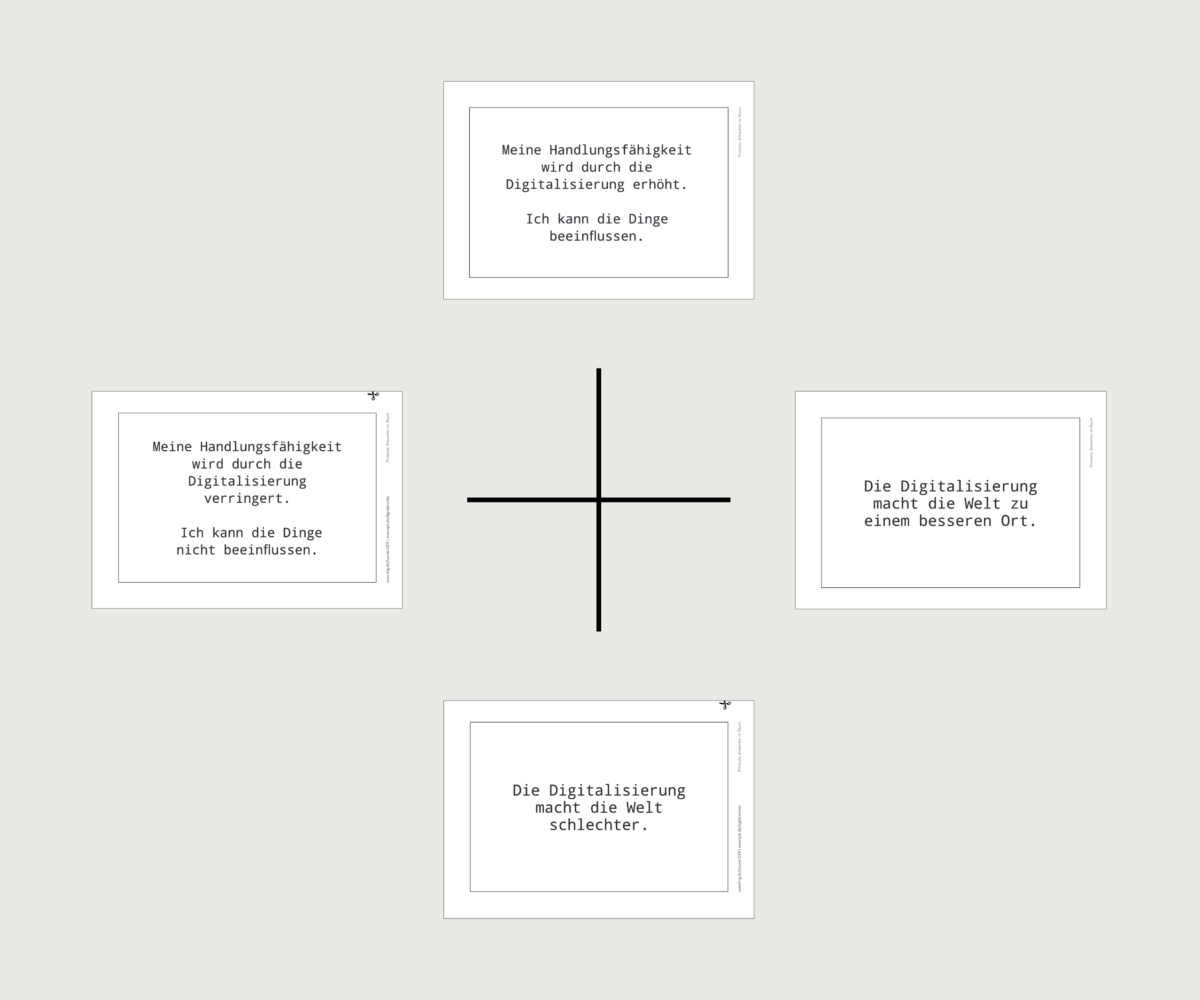
Step 1: My expectations of the digital society
At the beginning, all students gather in the centre of the room. Then each person thinks about a specific aspect of our society that they think will improve or deteriorate in the future as a result of digitalisation (Axis 1). This can be a broad area of society (e.g. the environment, the workplace or democratic processes such as elections) or a specific technology (e.g. TikTok, digital teaching or the metaverse). They then all position themselves in guided phases on axis 1 in the classroom. The stronger their feeling, the further forward they move in one of the two directions. If they position themselves on the topic of digital elections, for example, an optimistic view is conceivable due to lower physical barriers to participation, but also a pessimistic view due to problems with manipulation or a lack of technical equipment.
Step 2: What can I change in the future?
In the next step, the students move along axis 2 to assess their own ability to act in the digital world. The central question is whether digitalisation gives them personally the opportunity to influence social processes in the world or whether their options for action are limited by it.
Step 3: Understanding each other’s position
Once everyone has a picture of each other using this dynamic mood barometer, the pupils enter into a collective dialogue. They explain to each other which positive or negative aspects of digitalisation they thought of when positioning themselves on the axes. The aim is to understand why others stand where they are. The guiding questions are: What makes my classmates optimistic/pessimistic? Do they feel well prepared for the future – or would they like more information? Why do they think their digital literacy is low/high? What do they need to change their opinion and position on the axis?
Step 4: A new perspective
Finally, two students swap places. In private, they discuss the examples they have presented. They discuss whether they are able to take the other person’s position or influence it.
What other brainteasers are there?
The other five exercises in Making Sense of the Future also offer important incentives to face (digital) futures without worrying and to help shape our idea of an open society with clever ideas.
- From Weak signals to Megatrends: This exercise serves to reflect on our own anticipation of the future. It trains the ability to recognise and interpret possible drivers of change.
- Newspaper from 2040: This exercise is about creative writing and speculative thinking. As a journalist, you slip into the year 2040 and write an article about your own utopian future scenario.
- Transform future language: This exercise invites you to uncover the hidden assumptions and concepts in our language of the digital future.
- The Power of Three: The exercise helps to understand one’s own ideas and behaviour as part of a shared future. Three measures are developed that could lead to a desirable change in the future
- Criticise your utopia: This exercise follows the principle of the futures toolkit. Based on other open educational resources, we work on concrete ideas for digital futures.
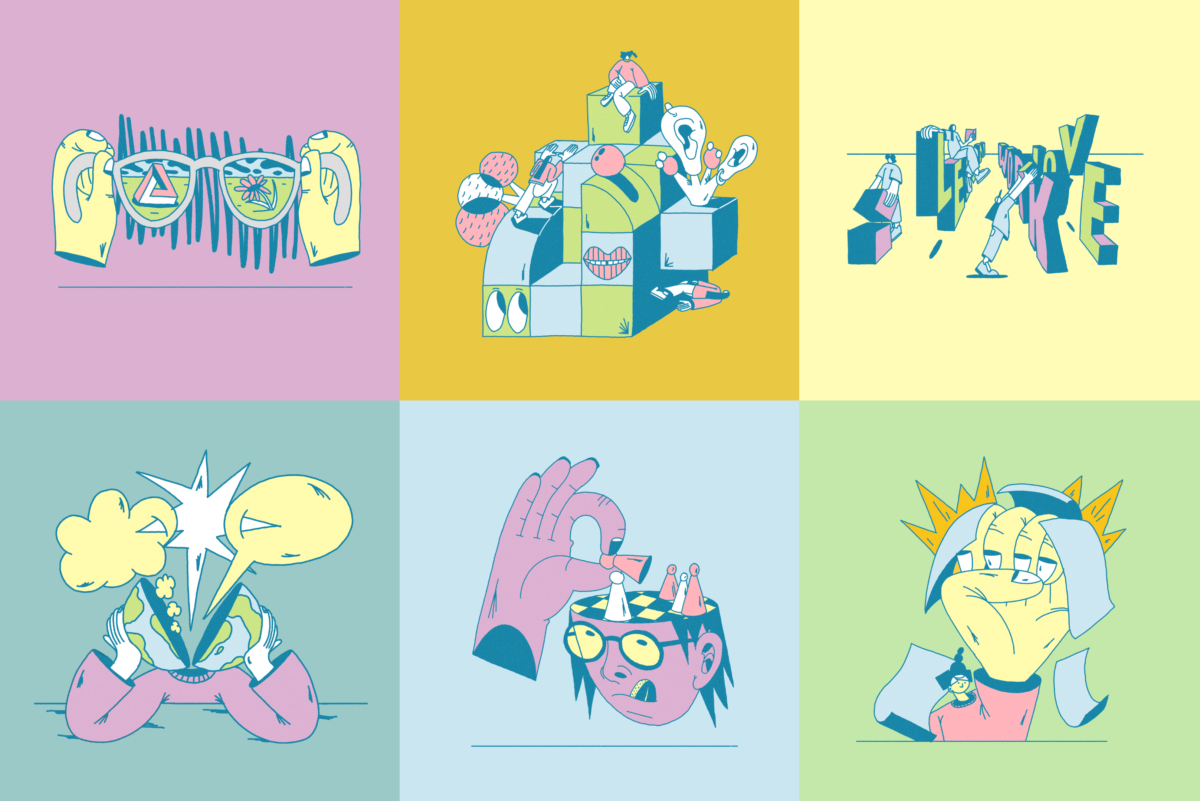
For students in secondary school II and above, we recommend working with the introductory exercises Answer by moving, From Weak Signals to Megatrends and Newspaper from 2040. They take between 30 and 90 minutes and require no additional material apart from the printouts. We offer didactic material for use at intermediate level.
All Making Sense of the Future exercises are available free of charge as an Open Educational Resource at https://www.hiig.de/en/making-sense-of-the-future/.
This post represents the view of the author and does not necessarily represent the view of the institute itself. For more information about the topics of these articles and associated research projects, please contact info@hiig.de.

You will receive our latest blog articles once a month in a newsletter.
Open higher education
Navigating platform power: from European elections to the regulatory future
Looking back at the European elections in June 2024, this blog post takes stock of the Digital Services Act’s effect in terms of navigating platform power.
AI Under Supervision: Do We Need ‘Humans in the Loop’ in Automation Processes?
Automated decisions have advantages but are not always flawless. Some suggest a Human in the Loop as a solution. But does it guarantee better outcomes?
The plurality of digital B2B platforms
This blog post dives into the diversity of digital business-to-business platforms, categorising them by governance styles and strategic aims.
